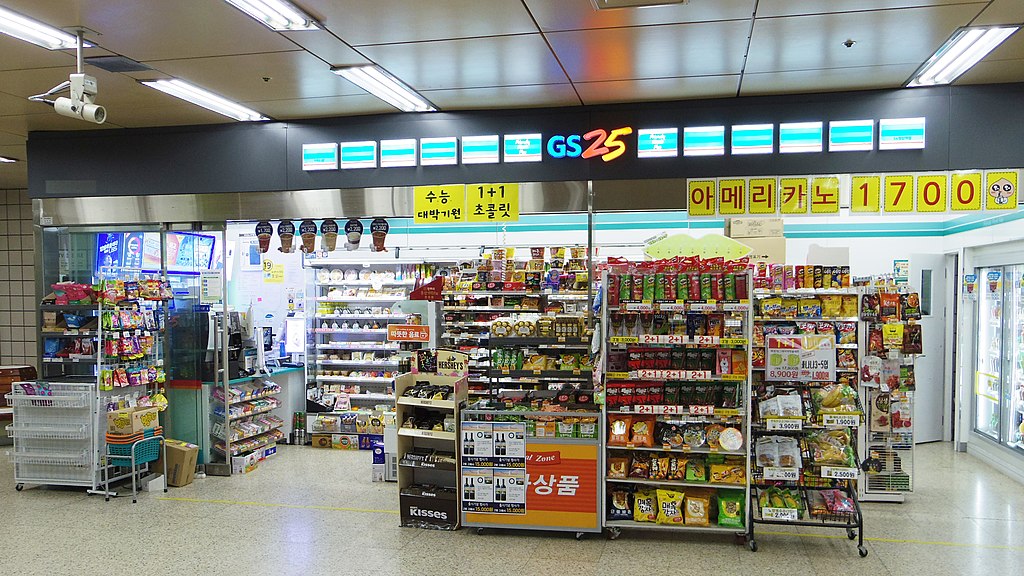You can now buy gold bars from vending machines in South Korea

At the corner of a bustling street in Seoul’s affluent Gangnam district, there’s a convenience store with the usual offerings: magazines, toilet paper, an overly generous selection of beverages. But next to the cashier counter stands a tall vending machine that sells a much more unexpected product—gold.
The machine at GS Retail Co.’s convenience store sells gold bars from as big as 37.5 grams (1.32 ounces) to as small as less than 1 gram. Prices change daily, reflecting wider market movements, but start at about 88,000 won ($64) for a 0.5-gram bar.
The machines operate in 30 stores in the company’s retail franchise across the country, six times more than the service started with in 2022.
“Currently we are seeing about 30 million won of sales per month,” said a GS spokesperson via text message. “The gold vending machine draws customers’ attention due to increasing demand for safe haven assets and the spreading trend of micro-investing.”
South Korean residents are caught up in the micro-investing trend that’s sweeping the globe. In the United Kingdom, 65% of Gen Z and millennials are open to investing in fractional shares (less than one share of a company), according to a May 16 report from Charles Schwab Corp. Retail investors worldwide have been flocking to everything from meme stocks to cryptocurrencies; for South Koreans, physical gold is just one more option.
Local investors have a “fear of missing out when everything rallies, and that partially contributed to the scene,” says Park Sang-hyun, an economist at HI Investment & Securities in Seoul, noting the recent surge that pushed gold’s market price to an all-time high of more than $2,400 an ounce last month. “Feeling uncertainty about the global economy prompts safe haven demand,” he adds.
The thrill of convenience store gold
GS is not the only convenience store chain tapping into gold’s allure in South Korea. Rival business CU began selling three types of ultralight gold cards on April 1. It took only two days for the 1-gram cards to sell out, according to BGF Retail Co., the company that runs the chain, with most of the demand coming from customers in their 30s.
According to a BGF spokesperson, 95% of 770 gold products on offer were sold as of May 31. “Sales accelerated as CU’s fixed-price gold products became cheaper than the market price,” BGF said in a press release. The retail chain will introduce higher-weight options, from 2-gram to 10-gram bars, in the future, but did not specify a date.
The trend of selling gold alongside bathroom staples and soda has caught the attention of Americans, too. Last summer, US-based Costco Wholesale Corp. began offering gold bars; now, even with a limit of two per customer, the 1-ounce bars whose cost is based on the market price get snapped up within hours.
In Korea, online banks are also trying to keep up with the demand for gold. Kbank, one of South Korea’s three internet banks with more than 10 million users, launched a service on May 9 that allows users of its app to purchase 1.875-gram to 37.5-gram gold bars with free delivery.
“With the price of gold recently topping $2,400 per ounce, investing in gold has become a popular way,” the bank said in a statement, adding that it plans to extend the service to gold coins and silver by the end of the year.
Micro-gold hype leaves Bank of Korea cold
One entity that isn’t about to start installing gold bar vending machines is the Bank of Korea. The nation’s central bank hasn’t purchased the metal since 2013. At the end of 2023, it held 104.4 tons of gold, according to a report from the news agency Yonhap. Meanwhile, in the first quarter of 2024, South Korea’s consumer demand for bullion rose 16% from a year earlier, to 8.6 tons.
Likewise, “the record high gold price fueled investor interest in South Korea,” the World Gold Council wrote in its quarterly report, noting that the country’s bullion demand in the first quarter of 2024 increased 27% from a year earlier. “This represented the strongest quarter for South Korean investment for over two years,” it added.
“Gold is not as useful as traditional assets like bonds and stocks in terms of managing within a pool of foreign exchange reserves,” Wanho Choi, the bank’s head of reserve management planning, wrote in a blog post to explain the bank’s stance.
“The bank has not purchased gold since 2013, leading [to] some criticism that the BOK [was] missing an opportunity for investment,” Choi added on the bank’s official blog. “It is not easy for central banks to sell gold for liquidity purposes due to reputational risk once purchased, so the investment decision requires careful consideration of many factors.”
“Retail investors who put their money into assets such as US Treasury bonds and Japanese yen from last year didn’t get a return they wanted,” observes Seokhyun Paik, an economist at Shinhan Bank. “Then they turned their attention to gold.”
(By Jaehyun Eom)
{{ commodity.name }}
{{ post.title }}
{{ post.date }}

Comments